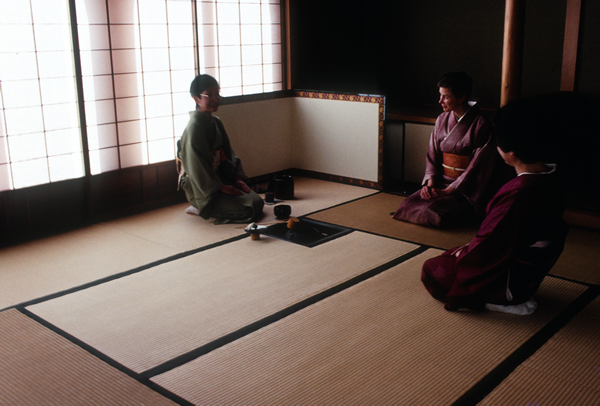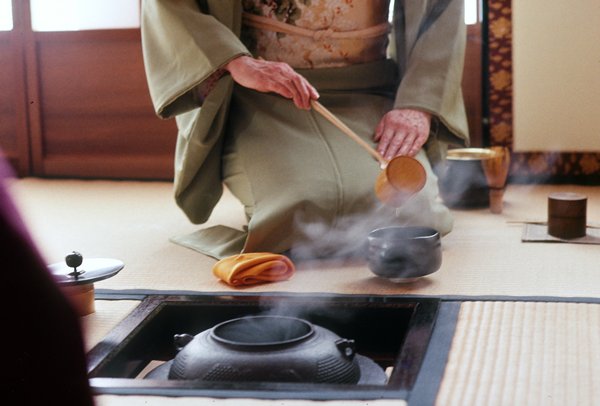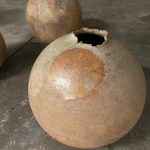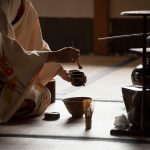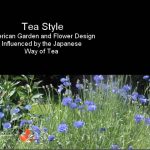In summer, guests come early for tea, before the heat of the day. The garden is sprinkled with water; the stepping stones glisten in the early morning light, moist and cool like a path through a forest. There is a sense of bridging, crossing over, proceeding deep into the garden and leaving the dust of the world behind. The leaves rustle in the wind. A covered waiting area appears where the guests sip cool, freshly drawn water from translucent porcelain cups. Water drawn from the same source will be used later for the tea.
The tea house is made of the most ordinary materials: thatch, bark, reeds, bamboo, wood, paper, and clay. The entrance is low, a tiny door only two feet square. One by one, the guests approach a stone step, bend low, and scoot into a small room of shadow and light. They are greeted by the gentle sound of simmering water and the delicate aroma of sandalwood. A scroll hangs in the dimly lit alcove with words that speak of wind or water. Moistened reed blinds cover the windows, droplets of water glitter in the sun. The feeling is cool and refreshing.
In fall or winter, guests arrive in the late afternoon or evening. They make their way along a path scattered with red oak leaves. The tea room is warmed by oil lamps and candles, and the fragrance of aloe wood and clove fills the tiny space. The kettle simmers on a sunken hearth near the middle of the room. The guests gather close to watch as the host adds charcoal to the fire.
A light meal of hot soup, rice, grilled fish, and pickles is served on black lacquer trays and ceramic dishes. Sake is poured into shallow red cups. A cedar tray with delicacies from the mountain and the sea is passed. A stacked box filled with truffle-like sweets is left for the guests to eat. They adjourn to the waiting area, where they sit for a moment and enjoy the garden.
When the guests return, they find the tea room changed. In the alcove where the scroll had been there is now a simple flower arrangement in a bamboo vase—a maple branch and a white camellia. The kettle has been joined by objects used for making tea: a ceramic water jar and a small ceramic tea container encased in a silk bag. The mood of the gathering has deepened, and now all are silent.
The host enters the room with a single tea bowl. The sound of his feet brushing the tatami mats mingles with the gentle hissing of the kettle. His movements are rhythmic and smooth as he unwraps the tea container from the silk bag, wipes the bowl, scoops in powdered tea, and ladles water from the kettle. Movement to movement, the gestures seamlessly merge as he mixes the tea and water with a small bamboo whisk.
The tea bowl is placed in front of a guest. He picks it up. The rough black ceramic is like a warm stone in his hand, a landscape of emerald green tea inside. All is quiet: the taste of the tea, the company of others, the heart of the host. The words of the scroll still linger in the mind and lead to a deep feeling for things of the moment.

